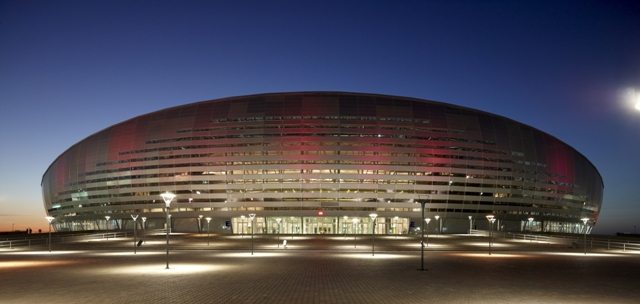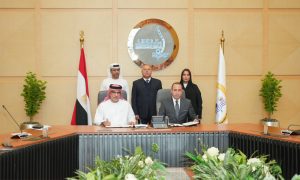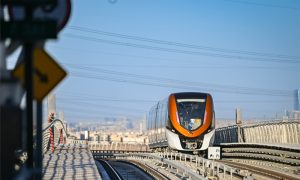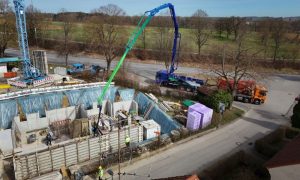United Nation
Astana Arena is a symbol for Kazakhstan say architects Melkan and Murat Tabanlioglu


The Astana Arena is 232,485m² site comprising 54,522m² green area and 66,236m² hard landscaping, and is encased in an aluminium façade.
The concept of a national arena is often underestimated; far from a venue for the local football team, such venues play host to a number of sporting events, music concerts and national celebrations; as with many things, it’s those without who notice such worth the most.
In 2005 Turkish architects Tabanlioglu were commissioned to design a $185m national stadium for the re-located capital of Kazakhstan; a country that had only the previous decade emerged from 70 years of soviet rule and as a result had a built environment predominantly influenced by military structures.
It was the first such place in Kazakhstan where 30,000 people could gather together at the same time and was inaugurated for the country’s national day celebrations in 2009.
“The stadium is conceived as a large fortress, which makes a distinctive and unmistakable impression both when it is seen from a distance and from close up; it constitutes a charming urban landscape and becomes a new scene in Astana, tallying with the synergy of sports, games, hospitality, nature and contemporary architecture,” says the firm in the project’s official literature.
For a country where most of the built environment is bleakly constructed with concrete and steel, the arena’s aluminium façade creates a striking impression on the main road between city and airport, thus meeting the criteria for contemporary symbolism.
“The drawing is nothing, you should always control, to the end, what you are doing. You can throw away the paper and forget about it but the building and reality of the dreams will still be there,” says Melkan Tabanlioglu of the design process.
“The world loves to talk about height – the biggest, the shiniest – but as an architect it is not interesting for me. For me, to make a very small building and to make a skyscraper, is the same thing.
“We can count firsts, but we should focus on the philosophy of our architecture. Our architecture is for the happiness of the people and that means it should fit the city and what the city needs,” she adds.
Part of the landscape
Despite being commissioned as a symbol of new Kazakhstan, Astana Arena also strikes a balance with the country’s architectural heritage while creating a symbolic link between the people of Kazakhstan and the rest of the world, via its location half way between airport and city.
The elliptic form is constructed on a 232,485m² site comprising 54,522m² green area and 66,236m² hard landscaping, and is encased in an aluminium façade.
The design implemented solutions such as simulation technology, that adopt high-tech principles for operational management, and environmental interaction with its surroundings particularly the country’s harsh climatic conditions. As the ninth largest country in the world Kazakhstan spans as far north as Siberia and as far south as Turkmenistan, and equally extreme conditions sweep in from both.
In order to further protect the high quality FIFA and UEFA approved artificial grass – not to mention the players and performers who play on it – from these conditions, a retractable steel roof system functions independently from the fixed roof system.
Two main beams in the east/west direction carry the metal coated shell and the roof shifts on the east/west direction above the steel construction elements. Polycarbonate elements cover the moving part of the roof to allow natural light to flood the stadium when the roof is closed. Besides transparency for natural light, the material was also specified for its resistance to deformation and impact, sound absorption and natural ventilation.
“The sliding roof is an integral part of the structure of the stadium. Whether closed or open, the roof is an elementary part of the whole arena,” says Melkan.
“The majestic motions of the cantilevered roof structure, two shields sliding toward each other to meet in the middle of the bowl structure create a spectacular effect,” she adds.
“We are spending a fortune on stadiums but they should be used for other purposes also. This is not only a stadium, but an arena. You can use the same place for concerts, national celebrations, for everything. It is part of the infrastructure,” she continues.
Designing an icon
The stadium is conceived as a two tiered solution with exclusive areas incorporated within and all tiered seats have an unobstructed view. All the stands are constructed from pre-fabricated concrete with the lower stands reaching a seating capacity of 16,000 and spanning an area of more than 9,717m². The upper stands hold 14,000 people and are placed only on the east and west sides; they cover 5,270m².
“The arrangement of the bowl structural grid has been chosen to allow a significant amount of repetition in the design and construction of the stadium, and offer reasonable column spacing. The structural elements mutually support each other and converge into a grid-like formation, in which façades, stairs and roof are integrated. Visitors walk through this formation and enter the spacious ambulatory that runs around the stands,” Melkan responds when asked about the practicality of using the arena.
The main considerations behind the materials used were pegged to the country’s climate. The use of steel and reinforced, pre-fabricated concrete, are both aesthetically versatile and durable; natural stone was utilised in VIP suites and connecting corridors; and aluminium curtain walls are used to coat some of the exterior facing profiles.
“The stadium stands at the forefront of global stadium architecture and technology, and will certainly contribute towards the thriving cultural and social scene within the rapidly developing Astana. It is a prestigious project not only for Kazakhstan, but also for our group; we are very excited about our future and ongoing investments within the country,” said Fettah Tamince, co-founder of Sembol Construction is quoted as saying when the stadium opened in 2009.
Since that day, Astana Arena has hosted the Asian Games, which had 5000 accredited participants; Day of the City concert, attended by 20,000 people; and a number of national and international football, boxing and weight lifting fixtures.
National treasure
Astana Arena isn’t the only national treasure in this story; award winning architects Tabanlioglu are held in equal regard in their native Turkey, from where brother and sister due Melkan and Murat originate.
This project alone has won the firm three accolades at the International Property Awards and Aga Khan Award for Architecture; in addition to a number of shortlisted awards.
Tabanlioglu also received a 2011 RIBA international award and further merit at: WAF World Architecture Festival, Barcelona; ICSC European Shopping Centre Award; and a number of Cityscape awards.
In response to the congratulations such awards attract, Melkan comments: “Rather than awards, it’s more important than anything to understand the culture, location and people, and to make a building that fits to their ideas.
“The experience we have, not just across Turkey but with several projects in Africa, Ukraine, Russia and Kazakhstan, each culture teachers you another experience and I think the most important thing about the Middle East is that it has a very similar culture to ours in Turkey and I think that if you have that quality, knowledge and experience you should convert your design, brain, mind and soul and everything.
“If you can think internationally, which is very important, architecture is universal,” she concludes.

























